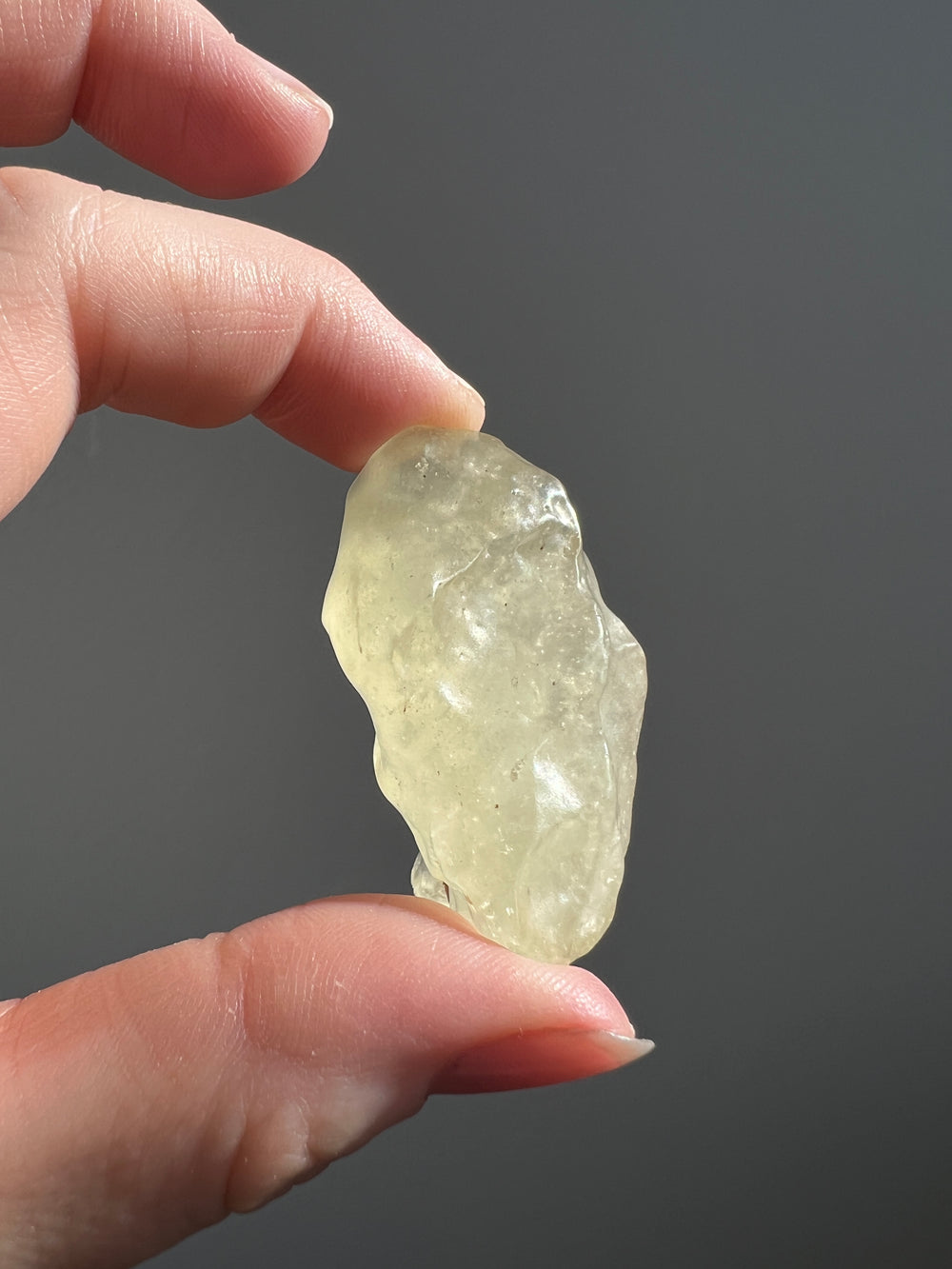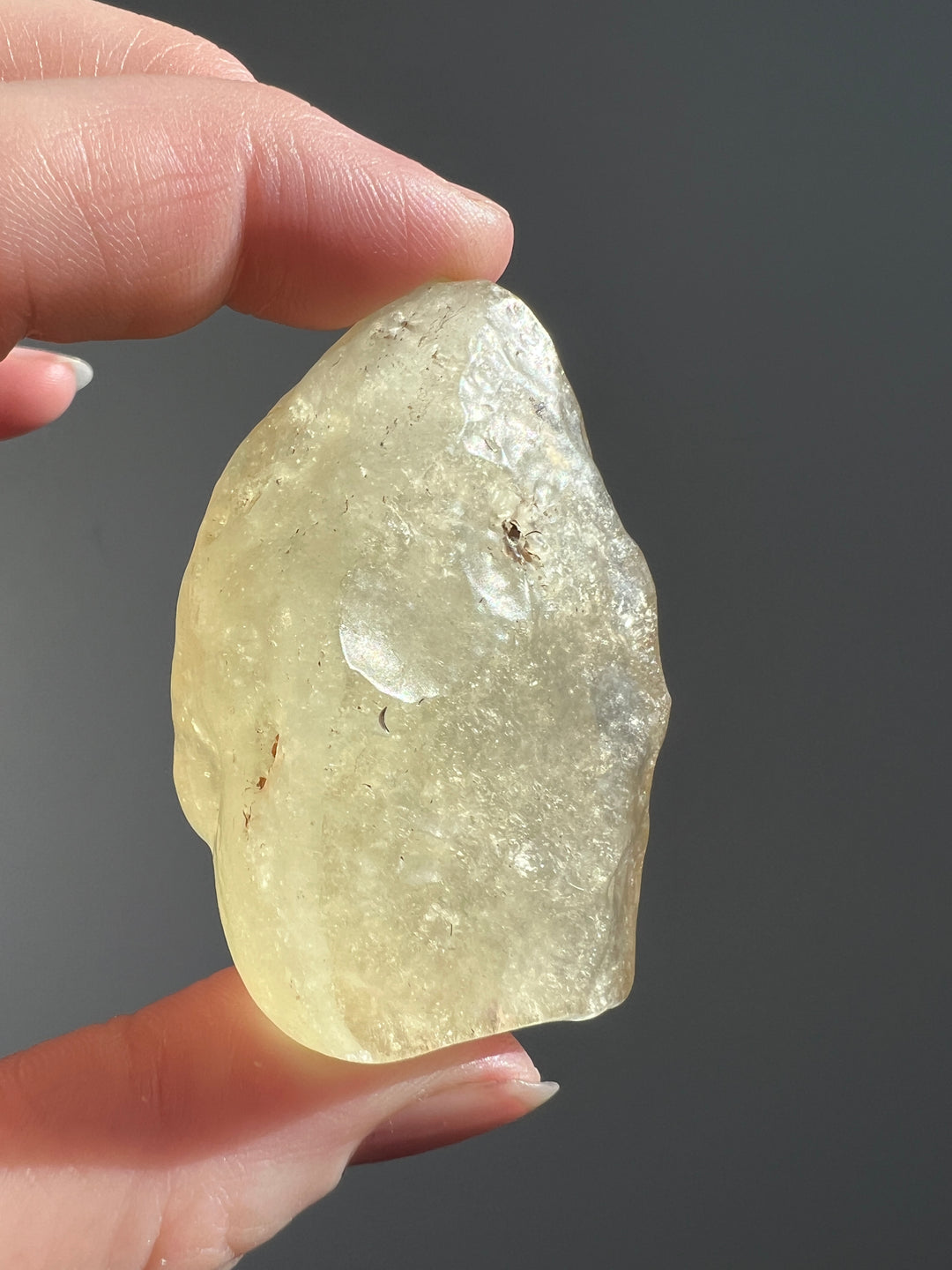Geological & Scientific Properties | Libyan Desert Glass
Libyan Desert Glass, also known as Great Sand Sea Glass, is a naturally occurring glass found in areas of the eastern Sahara, particularly in the deserts of eastern Libya and western Egypt. It is noted for its unique origin and characteristics. Here's an overview of Libyan Desert Glass's geological and scientific properties:
Chemical Composition and Structure:
- Composition: Libyan Desert Glass is a type of natural glass, primarily composed of silica (SiO₂). It is similar in composition to quartz but lacks a crystalline structure, being amorphous instead.
- Formation: The exact origins of Libyan Desert Glass are still debated, but the most widely accepted theory is that it was formed about 26 million years ago from the heat of a meteoritic impact. This heat would have been intense enough to melt the sand into glass.
Physical Properties:
- Color: It ranges in color from a pale yellow to greenish-yellow and is generally translucent.
- Hardness: As a form of glass, its hardness can vary but is generally less than that of quartz, around 5.5 on the Mohs scale.
- Luster: Libyan Desert Glass exhibits a vitreous luster.
- Transparency: This natural glass is typically translucent to semi-transparent.
Optical Properties:
- Refractive Index: The refractive index is approximately 1.46 to 1.47, which is typical for silica glass.
Geological Occurrence:
- Distribution: The main deposits of Libyan Desert Glass are found in the eastern Sahara, in the deserts of eastern Libya and western Egypt, particularly in a region known as the Great Sand Sea.
- Associated Features: Pieces of Libyan Desert Glass are often found scattered on the surface of the desert, sometimes in association with meteoritic fragments.
Libyan Desert Glass has been of interest for thousands of years. It was even used in ancient times for making tools and later for ornamental purposes, including as a gemstone in jewelry. The most famous historical artifact containing Libyan Desert Glass is a carved scarab that is part of the funerary necklace of Tutankhamun. Its mysterious origins and unique properties continue to fascinate geologists, archaeologists, and gem enthusiasts alike.





